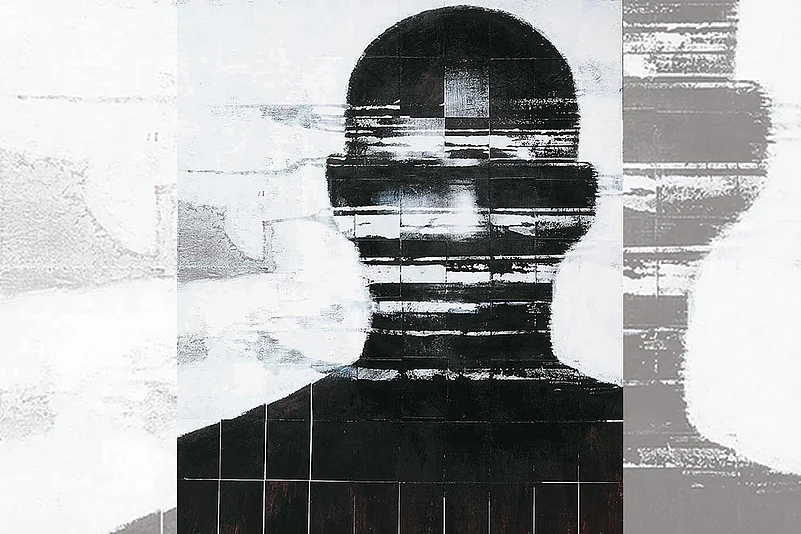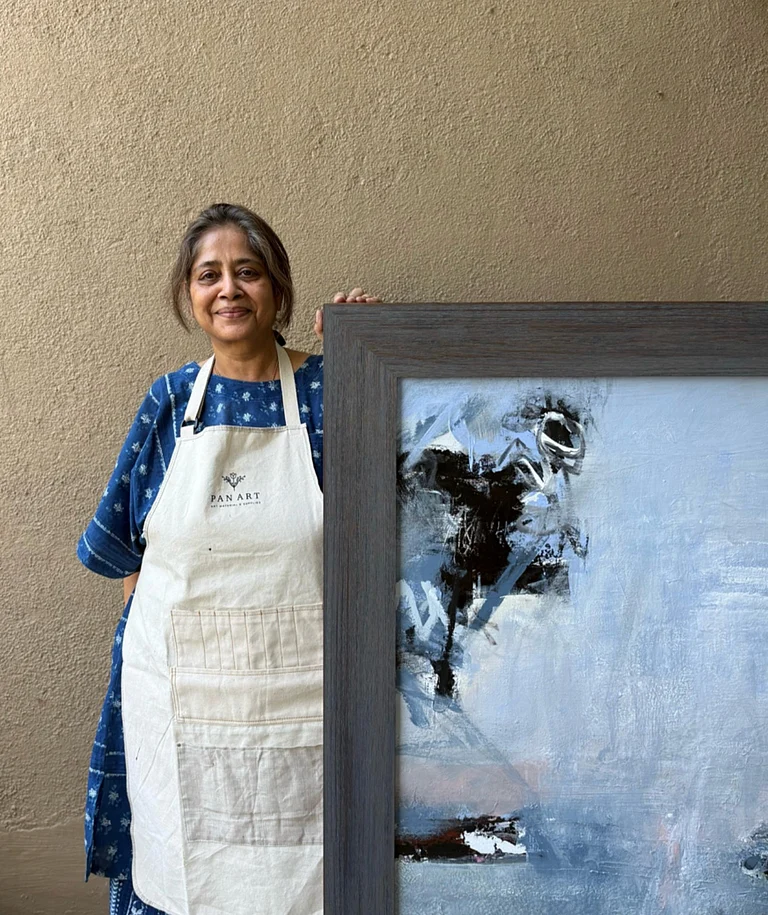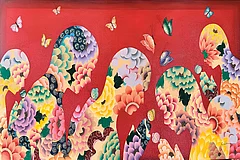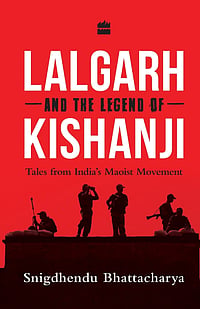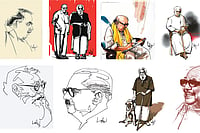About two decades ago, my late-teenager-self encountered a major heartbreak: I learnt that the Chilean Nobel Laureate Pablo Neruda—whose passionate poetry and sensual language were an integral part of my life—was a rapist. It was not someone’s allegation; he confessed to it in his memoirs. How could such a powerful writer of love poems rape someone?
I had to get one answer immediately: how did he write about it? Expressing what emotion—guilt, regret, remorse, objectivity, pleasure or indifference? So, I went through his memoirs, which were published a year after he died in 1973.
While describing his life as the Chilean consul in Colombo, Neruda mentions how “girls of various colourings” visited him and left “no record but the lightening spasm of flesh” when his “body was a lonely bonfire burning night and day on that tropical coast”. Those girls, “dusky and golden, girls of Boer, English, Dravidian blood”, went to bed with him “sportingly, asking for nothing in return”.
Neruda rather smartly describes one of these girls, who confessed to him of having sex with 14 British colonial clerks in their barracks one night, as “just another product of colonialism, a candid and generous fruit of its tree”. He also says her story impressed him and earned her a soft spot in his heart.
A few paragraphs later, comes a series of four paragraphs where he talks about “the most beautiful woman I had yet seen in Ceylon”. The Tamil woman was the cleaning lady, wearing the “cheapest kind of cloth”. But to the consul-poet, nose pins made of ordinary red glasses appeared like rubies on her. He sees her carrying the dirty receptacle from the latrine on her head “with steps of a goddess”. The poet took her to be “a shy jungle animal” belonging to “another kind of existence, a different world”.
Nevertheless, she neither responded to his calls nor took the gifts he put in her path. Finally, what he did with the “indifferent queen” of “dark beauty” is for everyone to read in his own words so that readers can draw their own conclusions.
“One morning, I decided to go all the way. I got a strong grip on her wrist and stared into her eyes. There was no language I could talk with her. Unsmiling, she let herself be led away and was soon naked in my bed. Her waist, so very slim, her full hips, the brimming cups of her breasts made her like one of the thousand-year-old sculptures from the south of India. It was the coming together of a man and a statue. She kept her eyes wide open all the while, completely unresponsive. She was right to despise me. The experience was never repeated.”
I read it and sat in silence. It was candid and cold. This writer is not the one who wrote, “White bee, even when you are gone you buzz in my soul/You live again in time, slender and silent.” The one who wrote, “In your eyes of mourning the land of dreams begins” is not this writer. The man behind these words had violently turned his “indifferent queen” into just an exotic, defenceless object of lust. A sex doll made of flesh, bones and blood. He ravaged her.
It was a different Neruda I encountered. His disgusting sense of entitlement broke my heart. He does show himself in an ‘unapprovable’ act, but the words do not reflect guilt or remorse.
It was a different Neruda I encountered. His disgusting sense of entitlement broke my heart. He does show himself in an ‘unapprovable’ act, but the words do not reflect guilt or remorse. If any regret the paragraph betrays, perhaps, that is of never getting to repeat the experience. To get her in his bed. To rape her again.
Or, are we to assume his confession was yet another way of rising above the average? Writers in the 1940s, 1950s and the 1960s have inspired awe by baring themselves before the public, by telling inconvenient truths involving themselves. Think of Albert Camus, Jean Genet or Anaïs Nin. Was Neruda too aiming at that sort of greatness by confessing to this crime? We will never know the emotions and intentions behind that confession. All we know is that he lacked the courage to publish this when he was alive.
Since then, artists I have idolised have continued to break my heart. Take the case of Bernardo Bertolucci, the Italian auteur, whose films—from Last Tango in Paris (1972) to The Dreamers (2003) —profoundly influenced me. But in 2007, actor Maria Schneider said in an interview that the famous rape sequence in Last Tango in Paris was non-consensual. She was 19 at the time of the shooting and was not even informed about the rape scene, and how the director and her male co-actor, Marlon Brando, had it planned while keeping her in the dark. Schneider said that she “felt humiliated and to be honest, I felt a little raped” both by Brando and by Bertolucci.
What was even more shocking was how Bertolucci spoke of the incident in 2013, while recalling it at an event. He admitted that Schneider was not informed and clarified that he had no regret because it was all for the greatness of art. How could he plan a violation of a woman’s body without her consent and justify it with the excuse of achieving artistic excellence? Bertolucci acknowledged that Schneider hated him for life, but it was not without a pride for his artistic masterstroke that he spoke of it.
A list of such examples led me to conclude that bad people can make good art. The work has to be seen independent of the artist’s moral position and actions. If the art offers you something, take it. Of course, unless the creations preach the same values, ideas and actions that we are condemning the artist for.
We cannot absolve Neruda of the crime of raping a powerless woman using his highly powerful position. A consul and the cleaning lady—think of the power equation! But what’s wrong in saying, “Neruda, an unconvicted rapist, was a great writer”? Reading his poems has not been the same since knowing of the incident of rape. I keep wondering if he faked his expressions. However, when an expression strikes the right chord, shows me a mirror, presents some secret I too had discovered and, phrases some expression better than me or supports a theory I vaguely had, I make them mine. The line becomes the reader’s.
Whose Art?
Beauty lies in the eyes of the beholder. Art belongs to the audience, the appreciator. Art has its own, separate existence, independent of the creator, from the moment it is born and meets people other than the creator. The artist has no power over how one interprets or uses the work. The creation matters far more than the creator. And it should, always.
It does make a difference whether the artist is alive or dead. Ignoring the dead is easy. But what does one do when a rape accused is living among us and using the power of money and fame to silence their victims?
Art not only represents fine human expressions, but also serves as a record of societal and human behaviour. They come from the collective wisdom of humankind of a few millennia and they add to the collective wisdom. They make us face deeper and darker realities of human behaviour and existence. They help us come to terms with our animal instincts and human morality/values. The creation is only one of their many actions. Creations are not them, even if every art carries in it bits and pieces of the creator’s true self.
After all, Richard Wagner, a Nazi collaborator, composed great music and those belong to humanity. Charlie Chaplin, a paedophile and abusive tormentor of his partners, made films that made the world laugh, cry, think and empathise. Pablo Picasso, who has been variably known as “a misogynist monster” and “sexual predator” who treated women in his life like objects of whimsical desire, changed the course of painting and broadened the scope of human imagination. Paul Gauguin, a known sexual predator, was one of the greatest painters of his time.
This is why the allegations against Alice Munro did not shock me. Her refusal to act upon her daughter’s complaints of sexual harassment against her stepfather—Munro’s second husband—only shows a different side of the person behind those short stories that earned her people’s love, affection, respect and a Nobel Prize.
Do Chaplin’s films preach or promote child sexual abuse or tyrannical behaviour? No. Chaplin’s work teaches one to condemn what he personally was. Neruda raped. But does his work justify or glorify rape? Wagner was with the Nazis. But does his work promote racism? Do Picasso and Gauguin’s work promote their behaviour with women in real life? If they do, then their art becomes a problem.
Art that breaks the barrier of surface-level reality and appeals to our senses and intellect, art that heals us and takes us through the hundred shades of grey that human nature is, should be studied, irrespective of who created them. The personality of the creator only adds layers.
There is an argument that says, “Don’t let their art justify their actions.” There is no way criminal actions can be justified. If Neruda or Chaplin were alive, I would be baying for their term behind bars. But there is no way we can say a criminal’s art has to be cancelled. The person must be punished for their personal actions. But generations should watch Modern Times, Gold Rush, The Kid, City Lights and The Great Dictator. Chuck Berry, a voyeur and repeated sex offender who did not even spare children, created songs like Johnny B Goode that should still be sung, listened and danced to.
The Question of Context
Context matters. It is especially central to the issue of morality because moralities change—conservative, liberal and radical moralities are different; South Asian, Arab and French moralities are different; so are Texas and New York moralities, Vedic, Tantrik and Catholic moralities; and the 19th, 20th and 21st-century moralities.
Art should not give immunity to the artist from their crimes or falls. Similarly, when the artist has committed a moral or criminal offence, bring them down; but spare their work.
Recent readings of texts from the past few centuries have unearthed many traces of racism, misogyny and other discriminatory values. For example, the depiction of slavery in Mark Twain’s Adventures of the Huckleberry Finn and misogyny in many Beat Generation writings. There are questions about whether we should give them the concession for being in their time when modern values had not developed.
The nature of crime matters too. In the 1930s, when Frenchman Jean Genet was in his 20s, he earned rather notoriety as a pickpocket and male prostitute and spent many years in jail. At one point, he was sentenced to life imprisonment for being a repeat offender. It took petitions from French intellectual stalwarts like Jean-Paul Sartre and Jean Cocteau to get him released after a short prison term. He wrote some of the most exceptional pieces of prose and plays published in the 20th century. But no one who has read his 1965 book, The Thief’s Journal, will trust him in person. He was terrible. He could play with anyone’s trust. He could betray those who wanted to give him a chance. He could appear irritably unpardonable. He stole from his sexual customers.
Genet’s crimes do not evoke the same moral shock today that Munro’s moral fall does. Woody Allen, who ditched his partner for her adopted daughter—and eventually, married his stepdaughter—made sharp, funny and thought-provoking films. His actions may be more in the domain of morality than crime, just like Munro’s actions as an enabler of a sexual offender. But why must we demand superior moral standards from artists to take their work seriously?
However, it does make a difference whether the artist is alive or dead. Ignoring the person is easy when they are dead. But what does one do when a rape accused or alleged sexual offender is living among us and seemingly using their power of money and fame to silence their victims?
What to do when a filmmaker or a theatre personality whose work I am fond of and who has been accused of sexual misconduct by using their positions of power—the fame of an artist—releases a new work, while victims continue to fight for justice? Going to the theatre could mean supporting the production financially, which may enable the artist to get away.
Should I boycott the movie/play then? I may. It’s difficult to see someone accused of sexual crimes or discriminatory actions going around as usual, partying, receiving accolades and, probably, collecting more potential victims. This boycott would not have anything to do with the art itself. But time may make it necessary that powerful offenders are made to feel accountable in some way. Children do suffer the consequences of their parents’ actions even if we wish they did not.
MORE FROM THIS ISSUE
However, even then, I would not discard their work. And I would try to have a look at their latest work—the one I boycotted—after the dust has settled down. Art should not give immunity to the artist from their crimes or falls. Similarly, when the artist has committed a moral or criminal offence, bring them down; but spare their work.
(This appeared in the print as 'To Separate Art From The Artist')






